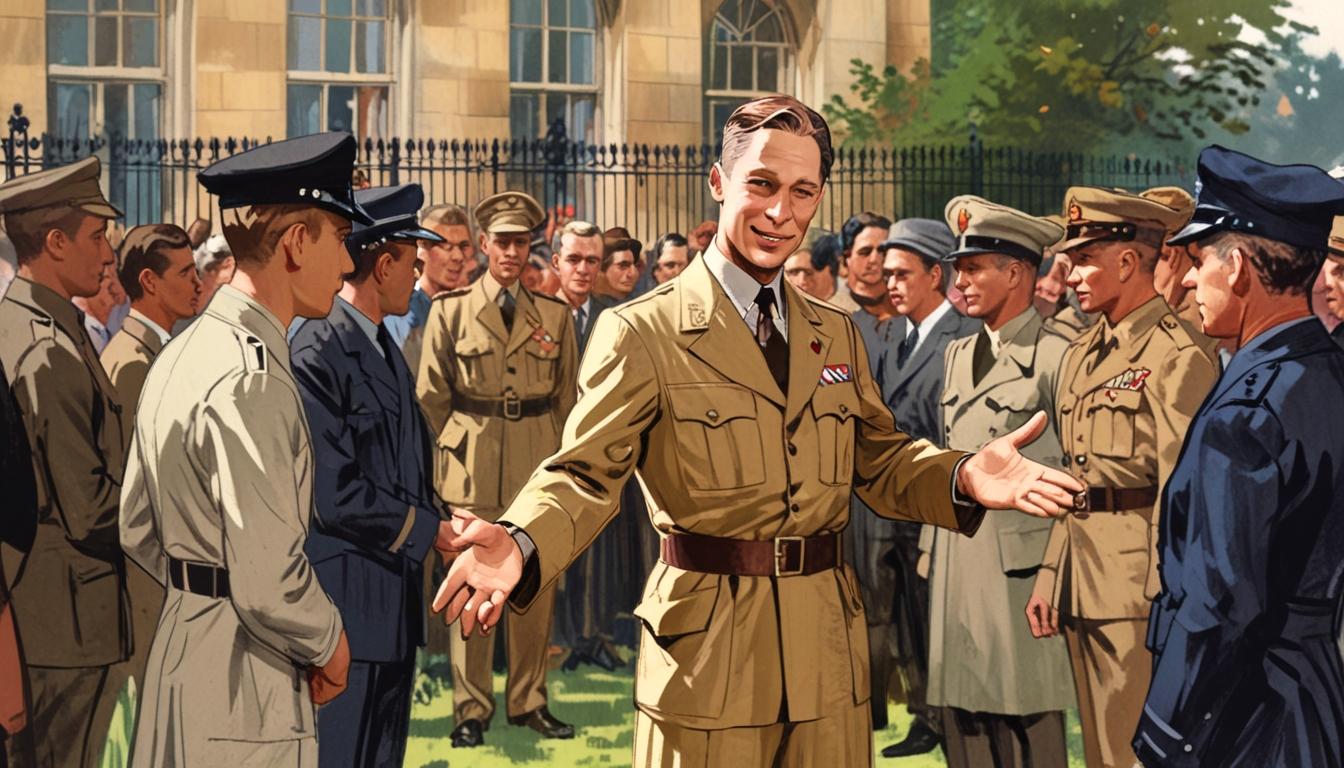During World War II, as London suffered under the relentless bombardment of the Blitz, Buckingham Palace became a refuge for several exiled monarchs from across Europe. This period of unofficial royal gatherings revealed not only tales of resilience but also exposed the complexities of royal diplomacy amid chaos.
King George VI, reigning at a time when Britain stood defiantly against Nazi Germany, was central to these wartime encounters. Among the distinguished guests was King Peter II of Yugoslavia, who had fled his country at merely 17 years old. Known to be somewhat distrusted by British officials, Peter eventually found his way to Cairo, effectively concluding his presence in London after facing uncertainties surrounding his leadership.
Another striking figure at the Palace was Zog I of Albania, who, after a hasty escape from his own nation during an Italian invasion, attempted to establish residence at The Ritz Hotel in London. However, his dubious reputation, linked to significant allegations of theft involving Albanian national treasury gold, led to his swift relocation by the Foreign Office to a less conspicuous residence.
Conversely, Queen Wilhelmina of the Netherlands arrived in London after an arduous journey across her war-torn country, greeted with nothing but her clothes. Frederick Corbitt, a Buckingham Palace official, remarked on her solemn presence, stating that he witnessed her sitting quietly in the palace gardens, seemingly lost in contemplation of her nation’s plight.
The exiled royals housed at Buckingham Palace varied in status and attitude. King Haakon of Norway and his son, Crown Prince Olaf, took refuge after fleeing Nazi forces in 1940. Their arrival was notable for its light-heartedness; King George VI extended his hospitality by offering personal clothing to them, showcasing a moment of royal camaraderie amidst the grim reality of war.
Notably, King George II of Greece and Emperor Haile Selassie of Ethiopia also found asylum in Britain. George II was temporarily accommodated at Claridge’s Hotel with his mistress, amid anecdotal remarks among royal circles, while Selassie stayed at the Langham Hotel before returning to a liberated Ethiopia in 1941.
Despite their royal statuses, all these figures were expected to adhere to wartime regulations while in Britain. Upon their arrival, they were provided with gas masks, blackout instructions, and ration books, reflecting the shared struggles of the nation they sought refuge in.
Meanwhile, the widow of King George V, Queen Mary, remained in relative safety at her niece’s country residence. Known for her disregard of wartime regulations, she maintained contact with distant relatives in Germany, employing clandestine methods to avoid government scrutiny.
Although the stoic public resilience of King George VI and his family during the war has been widely documented, the complexities and intrigues of royal interactions within the heavily damaged walls of Buckingham Palace during this tumultuous time offer a lesser-known glimpse into the lives of these exiled monarchs. This period, marked by uncertainty and remarkable stories, forms part of the rich tapestry of history surrounding the British royal family during World War II.
Source: Noah Wire Services
